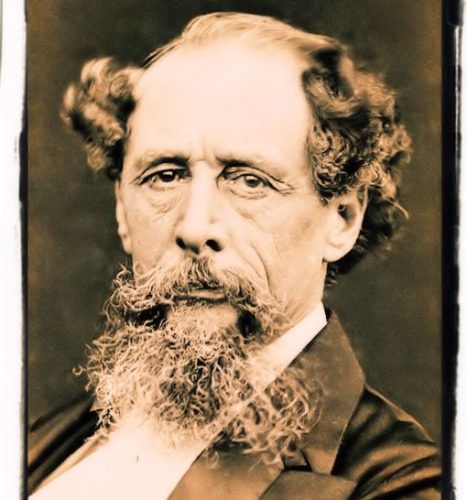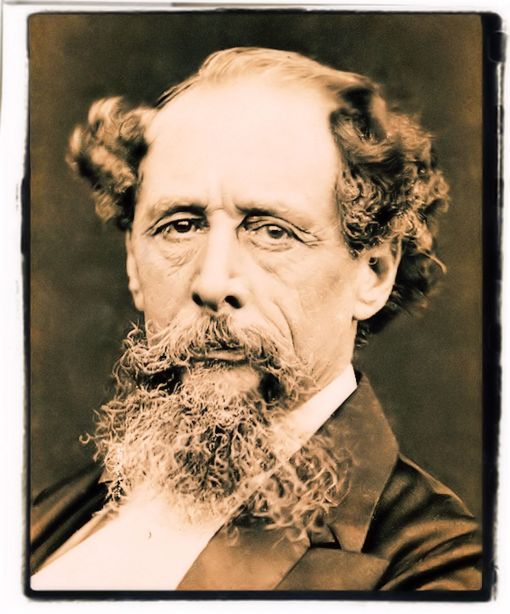
The Victorian literature, a complete article about the most famous authors, writers, novelists, poets and essayists of this great period of vitality and expansion.
The 19th century was a period of great vitality and expansion for Great Britain. Technological progress, begun in the previous century with the Industrial, evolution, gained great momentum with the extensive. exploration of iron and steam for industry and transportation. In addition, free trade had brought prosperity to the cotton and wool industry. London had become the world centre of finance and shipping, moreover, the railway had greatly influenced trade and social life, as communication and transport from one part of England to another was greatly sped up. Life had become a little bit easier thanks to the improvement of little things of life; gas and oil were substituted by electricity, there was more clothing, food and furniture.
Despite these improvements, life was still very hard particularly for the working classes, both in the town and the country, where low wages, long hours, miserable living conditions, poor sanitation and disease were common. Because England was the first nation to industrialize, it experienced fully not only the positive but also the negative aspects of the process. During the reign of Queen Victoria, while Great Britain developed into the greatest political, industrial, commercial and financial power in the world, it also had to cope with a number of social problems which resulted from industrialisation. The early Victorians were aware of the social cost progress. They were conscious of the tensions and contradictions of their times, but they thought they would be only temporary and that sooner or later progress should bring an enormous increase in material wealth to all.
The Victorian Age is important not only in itself but also in its effects and its consequences which still mark our present times. It is generally considered to be covering the years between 1830 and 1900 which roughly coincide with the reign of Queen Victoria (1837-1901), who, according to some critics, exercised her direct influence over literature as well as over social life. But this latter statement is dubious and still controversial, and we are led to believe that rather than impressing her personal traits upon the age the Queen embodied, and became the symbol of the practices and ideals of the new commercial and industrial upper middle-class. The Victorian Age was an age of artificial respectability, complacent narrowness, false modesty and hypocritical squeamishness in facing certain facts of life like profanity or sex. A code of “decency” was practically established by the “best” people, who generally represented the leading classes. A sense of nationalism and self-satisfaction swept over England and the country became insular, complacent and wealthy, drawing in one way within itself while extending its conquests and colonizations overseas. Egypt, Sudan and the control over Suez were acquired, dominions were set up in Australia, Canada and New Zealand, the British possessions in South Africa were consolidated, and Queen Victoria became the Empress of India in 1876. By the end of the century, England possessed the greatest empire in modern world history. At home, the new technical progress and the advancement of science had turned England from an agricultural to an industrial country, bringing about the consequences of a too rapid change. There was too much poverty, too much ugliness and little certainty about faith and morals.
The Victorian literature is varied and complex, and the modern student can find in it an astonishing variety of attitudes stretching from Romanticism to a somber and factual classical realism. The majority of the writings of the age, however, show particular interest in the real problems of a scientific, industrial and orthodox society. The interest in the novel and in the essay, increased with the educational advancement and with the enlarged literate and wealthier middle-class. This demanded a realism in fiction and an analysis of the problems of the people that could suit the social and moral standard of the average Englishman. The same realism, however, was not required in drama, because in this genre, it tended to become critical and satirical, and consequently ill-suited to the self-satisfaction and pride of the Victorian society. In an age of home family gatherings, the theatre-going public diminished, and the people who still attended the theatre required light comedies, farces and melodramas.

In 1832 he Reform Bill was passed; this step marked the victory of the House of Commons, an elective body, by extending the right of vote and by redistributing the seats so as to increase the political power of the new industrial towns. And England passed from the rule of aristocracy under the one of bourgeoisie. From 1816 – 1833, new laws were passed, regulating child labour; in 1834 another law abolished slavery in the British possessions overseas, and in the same year, the Poor Law provided for a public system of relief. Struggles for religious and social freedom continued however, throughout the century and are still vivid in present times. Darwin with his theory of evolution expressed in his Origin of Species, gave a big stroke to all accepted religious teaching and found himself at the centre of the controversy between religion and science. Victorian age was an age of imperialism, expansion and self-satisfaction, but also an age of trouble, bitterness and doubt: it would be enough to remember the Chartist riots, the long agitations, often accompanied by bloodshed, for trade union rights, and the Irish famines.
During the Romantic Age, poetry had been the predominant literary genre. The changing nature of society and the emergence of new scientific theories led to a revival in prose, as writers began to consider their effects on men and life in realistic social novels, essays of social criticism, and in scientific treatises. A great advance in communication, cheaper paper, and improved printing technology brought down the price of the printed word, widened distribution and brought in the age of truly popular literature. The novel written in monthly instalments and published in periodicals was an example of the popularity of fiction. The greatest popular novelists of the age were also responsible artists who both entertained readers and opened their eyes, showing them aspects of society that they preferred to ignore or were unaware of. Early Victorian novelists, such as Charles Dickens and William Makepeace Thackeray (1811-1863), instructed and at same time entertained.
As the century advanced, the diversity of prose fiction works increased. An important extension of the great Victorian realistic novel was the naturalistic novel, made popular by the French novelist Emile Zola (1840-1902) in the 70s and 80s. As in realism, naturalism took “ordinary” life as its subject, with one important difference: heavily influenced by 19th century medical genetic, sociological and evolutionary theories, naturalism tended to view life more “scientifically”, suggesting it was determined by the environment, historical factors and heredity. It also tended to view human existence pessimistically. The novels of Thorrias Hardy (1840-1928) were heavily marked by naturalistic elements. The vitality and the popularity of the novel are also demonstrated by the emergence of two new forms: the fantasy novel and the mystery-detective novel. The greatest piece of fantasy fiction written in this age was Lewis Carroll’s (1832-1898) Alice’s Adventures in Wonderland (1865). There were also novels of romantic love written by two early Victorian women novelists: Emily Bronte (1818-1848) and Charlotte Bronte (1816-1855), while the new realistic vision of relations between the sexes are visible in the novels of another woman novelist George Eliot (1819-1880).
Newspapers and magazines had already entered middle-class homes as common reading material. In this period novels were increasingly published in installments, in different issues of magazines. The installments of novels provided a popular form of entertainment and were read aloud by the family in the evening. Charles Dickens (1812-1870) became the most successful exponent of this form of the novel and was often engaged in writing different installments of different novels at the same time. Participation in the events of a story was great; so great that, on occasions, letters to the editor persuaded Dickens to change events to suit the tastes and expectations of his readers. Greater circulation also meant that different ideas and points of view were reaching a wider and more varied reading public. So the form of the novel became an instrument for the circulation of social and political ideas. But one of the most popular books of the 19th century was Samuel Smiles Self-Help, published in 1859, which claimed that success was the product of four virtues, thrift, character, self-help and duty and also Dickens’ novels were filled with characters aspiring to better themselves.

As a result a form of anti-Victorianism spread among writers; their interest in art and the renewal of literary forms of expression prevailed over their social and political involvement. Some of them developed an aesthetic creed of “art for art’s sake”; others turned their eyes with increasing attention to what was going on in other countries and became deeply affected by French naturalism and symbolism, by Henrik Ibsen’s (1828-1906) realism, and by the great flowering of the Russian novel. Therefore, contradictory tendencies were at work and existed side by side: a deeply felt nostalgia for stability, decorum, and imperialism expressed by Rudyard Kipling (11365-1936), coexisted with the feminism and reformist Socialism of the Fabian Society, as expressed in George Bernard Shaw’s (1856-1950) plays and H.G. Wells’s (1866-1946) fiction.
Furthermore, awareness of the tragic and of the ugly sides of colonialism was beginning to emerge in the work of Joseph Conrad (1857-1924). In the closing years of the century the opposition to “philistinism” and utilitarianism and to the prejudices of Victorian society took a new form and the fin de siècle, decadent spirit present in several European countries also emerged in England. The young aesthetes of the Nineties and their most prominent exponent, Oscar Wilde (1854-1900), believed in art to the point of considering it a substitute for life, and they tried to live according to their aesthetic principles, a provocative attitude which brought them into open conflict with society and, in Wilde’s case, with the law.
Poetry continued to thrive in this period. Lord Alfred Tennyson (1809-1892) and Robert Browning (1812-1889) are considered the two greatest poets of the age. Tennyson is a good example of the Romantic strain that flowed on through Victorian poetry but was forced against the hard rocks of contemporary social and intellectual issues. His work is often described as sensuous and musical and highly influenced by John Keats. Yet, Tennyson’s poetry also tried to struggle with the crisis in beliefs brought about by the new science. As he worked towards a vision based on belief in God, he also provided much consolation to the readers of a troubled age. Important innovations were introduced by Robert Browning, whose work seems to reflect the curious, vigorous, probing, confident side the Victorian outlook. Browning was deeply interested in the workings of the human mind and is particularly associated with the dramatic monologue, a poetic form in which characters reveal their innermost nature by what they say.
Pre-Raphaelite poetry was the clearest expression of the enduring Romantic spirit. Originally, the Pre-Raphaelite Brotherhood, founded at the end of the 40s by the painters John Millais (1829-1896) and Wiliam Hunt (1827-1910), had advocated a return to simplicity, tempered with mysticism, of the Middle Ages and rejected the materialism and ugliness of industrial England. One of the Brotherhood, Dante Gabriele Rossetti (1828-1882), also became its chief poet, producing technically refined sonnets and lyrics in which, the poet withdraws into a private world, dwelling on subjective feelings and desires, and worshipping idealized beauty. They aimed to reclaim for the artist the freedom in manner and choice of subject which he was supposed to have exercised before Raphael’s example and prestige became dominant. The movement was also a protest against the influence of Sir Joshua Reynolds and the tradition of academic artificial art. Initially, their work was characterized by an almost fanatical attention to detail in order to show the material nature of their age. As these painters set out to depict their times with new artistic and moral honesty, their subjects ranged from prostitutes, widows, and workers to middle class lovers, and scenes of bourgeois hypocrisy and suburban views. Later, each of the founding members drifted away from these aims.
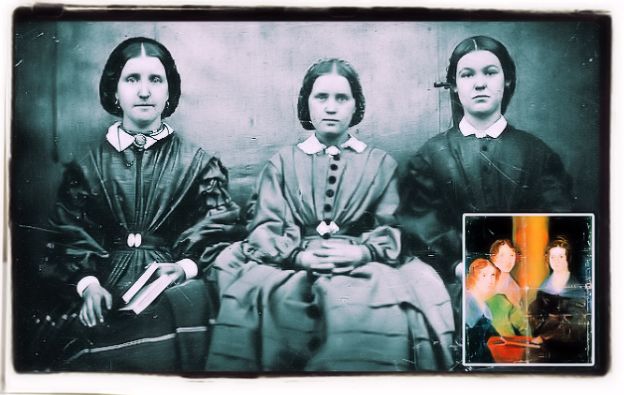
Victorian drama suffered from two circumstances: firstly, the novel, which drew talented writers away from the theatre; secondly, when gifted writers attempted to write for the theatre, they composed plays based on historical plots and used poetic language which had little appeal to the general public. It is significant that Alfred Tennyson and Robert Browning, the two greatest poets of the age, tried writing drama with little success. Their plays were usually called “closet plays” because they were intended for private reading rather than for performance in the theatre. For most of the century theatres continued to perform their customary repertoire of melodramas, sentimental comedies, and farces. The best plays were the comic operas of William S. Gilbert (1836-1911) and Arthur Sullivan (1842-1900). The success of their operas seems to rest on the happy combination of Gilbert’s fantasy and satire, and Sullivan’s music. Patience, one of their operettas, is a satire of Oscar Wilde (1854-1900) as an exponent of the Aesthetic movement. However, Gilbert and Sullivan prepared the theatre audience for Wilde’s brilliant comedies, which combined verbal irony with comic and absurd situations, readapting the Restoration “comedy of manners” to fashionable, upper-class Victorian settings.
In the meantime, innovation in subject matter as well as in technique had begun outside Britain. Important new dramatists addressing new social and psychological issues were emerging all over Europe: Henrik Ibsen (1828-1906) in Norway, August Strindberg (1849-1912) in Sweden, Maurice Maeterlinck (1862-1949) in Belgium, and Luigi Pirandello (1867-1936) in Italy. Ibsen became known in Britain thanks to the young Irish critic George Bernard Shaw (1856-1950). In The Quintessence of Ibsenism, Shaw championed Ibsen’s realistic drama. His plays about real social and domestic problems in bourgeois life shocked the public, but also inspired dramatists like Shaw himself to use the theatre for dramatizing ideas. Soon, Shaw began to write plays himself, comedies instead of tragedies, which resembled Ibsen’s plays in their sharp comment on the social problems of his time.
The Victorian age was also the one in which the idea of class evolved and strengthened. One of the most interesting results was the birth of the concept that many people together may propose solutions, may ask for reforms, may petition to Governments and press public opinion. While the suffrage was enlarged more and more, people felt responsible of the Nation and believed they could become the spring of many changes through a fair pressure on authorities. What now is called the powerful lobby system, skillfully organized by mass media, was then represented by few men who believed they could do something to improve their society. These groups were supported by a great production of prose-writing. The writers were scholars, often historians or critics, sometimes sort of sociologists, even if the term had not been invented yet. Some of them glorified the rules and the ideals of the Victorian society, some others harshly critized it and its more or less hidden hypocrisy. Thomas Macaulay belongs to the first group. He perfectly embodied the Victorian, bourgeois, empire-building spirit based on democracy, free trade and scientific evolution. He believed in progress and devoted his life to spread the optimistic view of the industrialized society. A lucid style and a powerful eloquence helped him in his own mission of defense of the national spirit.
Almost all the essayists of the Victorian age particularly felt a social responsibility and were inspired by the desire to instruct the huge masses of society. Their purpose was objective and didactic at the same time; they can be divided into two groups according to whether they agreed or disagreed with Victorian England. Writers such as T. Huxley and B. Macaulay were satisfied with their age and believed that commerce, social expansion and scientific advancement could only carry civilization to a more fruitful accomplishment. On the other hand there were Arnold, Carlyle and Ruskin who, condemning the Victorian materialism, sought refuge in an idealistic reaction which, instead of looking forward, tried to find in the past both cultural and spiritual values.
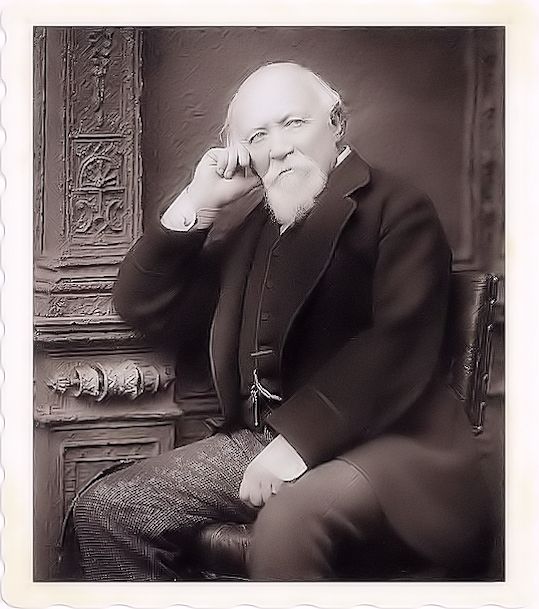
Thomas Babington Macaulay (1800 – 1859) is a famous historian and essayist. His brilliant Essays, among which the most remarkable is on Milton, show wide learning and clarity of style, but lack depth of feeling. He is best known for The History of England from James II to the Revolution (left unfinished) where the author’s aim is to make history as vivid and fascinating as possible. Literary criticism finds its best expression in the work of Matthew Arnold (1822-1888), a famous poet and essayist of Victorian England. In his Essays in Criticism as well as in his other prose-writtings Arnold tried to break down the prejudices of his countrymen, whose Anglo-Saxon element and “insularity” he disliked. He attacked “Philistinism” of the English and their lack of concern for culture, believing that the latter had its root in the art and philosophy of ancient Greece. The classical qualities were exactly what the Englishmen needed if they wanted to attain harmonious perfection in morals and in literature. Arnold was, by profession, a school inspector, and his scholarly bent led him to deal also with education and religion. His Literature and Dogma develops his religious theory: according to him, man needed religion but religion had been spoilt by institutionalism and dogma and by the same materialization that had affected society and science. Its task and functions were therefore to be timed by poetry.
Thomas Carlyle and his disciple John Ruskin strongly criticized the positivist, bourgeois society of their time. They had been both brought up inside very rigid Puritan families and they developed a very strict sense of morality which contrasted with the false apparent one that the bourgeoisie seemed to show. They attacked the liberalist economic theories and claimed the need for an economy in which the interests of society would prevail over the individual ones so that to heal the great evils of mankind. A more humanized science, that’s what they both were looking for. More philosophical were Carlyle’s writings, more directly critical Ruskin’s ones. For Carlyle the sudy of German Romanticism became the source of his religious idealism that he acquired from Novalis, Richter and Fichte. They both interpreted a feeling of unrest which spread little by little along the century and burst out into a serious crisis at its end. According to Ruskin’s principles there can be no art without morality and no morality where poverty and ignorance reign. Social reform thus becomes an indispensable basis for art, and the pursuit of the beautiful turns into an almost religious duty.
It is however in the field of the novel that the Victorian Age gave its best fruits for this genre appeared to be most suitable to the presentation of the complex experiences of the age. The Victorian literature it is largely characterized by the struggle of working people and the triumph of right over wrong. The novel replaced the poem as the most fashionable vehicle for the transmission of literature. The novel as a genre rose to entertain the rising middle class and to depict the contemporary life in a changing society. The novels have a stress on realism and an attempt to describe the daily struggles of ordinary men that the middle class reader could associate with. Towards the end of the 19th century the powerful tradition of Victorian fiction – moral, realistic, popular -began to decline, and a new complexity emerged: it was a turning point that prepared the way for what we now call the “modern novel”. Some of the reasons for this change in literature were social (the growth of urban population, the acceleration of technological change, the development of improved education and literacy, the gradual increase in personal wealth); others were intellectual (the decline of the confident, optimistic Victorian worldview, the rise of science and of secular disciplines like sociology and psychology, the development of a more material view of life); and there were also psychological reasons, such as changing opinions on the nature of the individual, on social life, sex and gender relations, together with a more fluid view of consciousness and identity.
The Victorians revived the tradition of the realistic novel of Fielding, and made people take more interest in their own time, rather than in the far-away past of Sir Walter Scott. They took up Jane Austen’s novel of manners, but enlarged its scope by applying it to every possible phase of the social structure. The most popular of the English novelists of the time is certainly Charles Dickens (1812-1870) who was born in poverty in Portsmouth. He had little schooling, and, before he was ten, he found himself earning his living in a London warehouse, while his father was in prison for debts. These years of bitterness were later described in his novel David Copperfield. The situation of his father improved, and at the age of sixteen, he got a post in a lawyer’s office; but before long he forsook the law for journalism and became a newspaper reporter. In his spare time he jotted down a number of sketches, describing life in London, which were later published in book form with the title Sketches by Boz. By this time he had already acquired a disrespectful (familiarity with official processes, a certain contempt for the machinery of justice, and a reporter’s keen eye and ear for significant details: Dickens was therefore ready to start his new literary career.
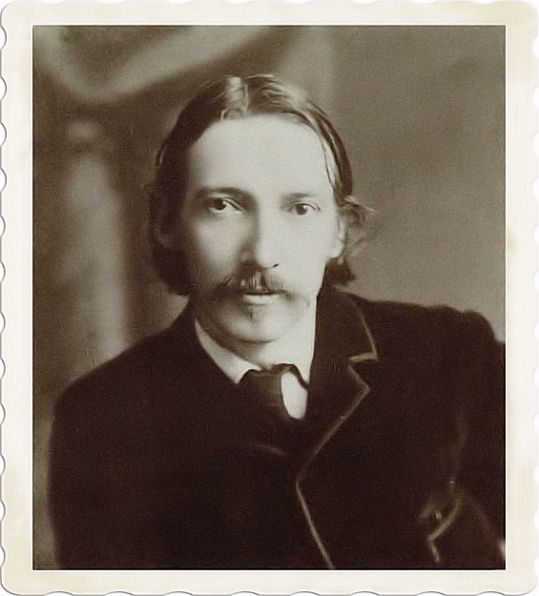
In 1837 he published The Posthumous Papers of the Pickwick Club, where, using the novel form, he drew a series of humorous sketches of the very diverting members of the Pickwick Club. The characters, first observed merely through their physical features and their external mannerisms, are here imperceptibly transformed into people with a lifelike mixture of pathos and absurdity, of generous impulses and foolish mistakes. The history, no longer a reporter’s panorama of contemporary life, becomes an apologue of the discovery of evil by a man who has innocently believed that human beings are innately good. Dickens’ energy as a writer was enormous and within thirty-three years he published no fewer than thirteen long novels. With The Pickwick’s Papers he had started on his crusade against social injustice, and Oliver Twist (1838) followed on the same line. We are here confronted with a realistic story of an unwanted child who falls the victim of the criminal life of the London slums. The novel, which tends to be episodic, is held together by a carefully planned mystery and by the social consciousness which is the dominating theme in the book. Despite its handicaps of sentimentality and melodrama, it survives for its objectivization of a profound emotional state: the solitude felt by an individual who has no place within the framework of society. Having dealt with the plight of children of unknown parentage, the writer turned his attention to the cheap boarding schools where the bastards and the sons of broken homes could be left to suffer disease and cruelty.
He therefore published Nicholas Nickleby (1839): here Nicholas and his sister, like Oliver and Mr. Pickwick, provide the contrast between the pure in heart and the menacing evil surrounding them. The reader has the certainty that innocence will triumph; the humour is rich and hearty, while the pathos, is never so gloomy as in Oliver Twist. The Old Curiosity Shop (1840) tells the story of how little Nell tries to save her bankrupt father from the clutches of one of his creditors, and, after wandering with him through England, dies, worn out by her unselfish devotion. Sentimentality is here abounding. Dickens tried his hand at the historical novel in Barnaby Rudge (1840-1841), where he went back to the Gordon Riots in 1780, when the mob set fire to Newgate and for a time held London in terror. In 1842 he visited the United States; but his impression of the country in American Notes (1842) was not so favourable. He had expected the young Republic to be an ideal of liberty and equality and was disillusioned in finding out that these slogans meant liberty to be unscrupulous in business, and equality in bad manners and obtrusiveness. He felt therefore compelled to depict in an extravagant satire the crudities of American society in Martin Chuzzlewit (1843-1844): an elaborate study of selfishness. Dombey and Son (1848) is a study of the wealthy businessman, his power over other people’s lives and his pride in the integrity of his firm. His commercial success has rendered him sure that his opinions are always right so that his determination of transmitting his business to his son leads to the ruin of the boy’s health. His rigorous plans for his son’s training and his exaltation of economic principles over human feelings result in loss and misfortune, which however succeed in softening his heart and humbling his pride.
In 1849, Dickens wrote David Copperfield. Here under the guide of a fictitious narrator, the author was able to reveal the bitterest experiences of his own early days: his humiliation at his father’s sojourn in prison, his disappointment in being denied regular schooling, his experience at the blacking factory and his grudge against the adults responsible for thrusting these miseries upon him. He thus grasped the reader’s sympathy with a peculiar intensity that came from personal emotions, where all his first-hand experiences were assimilated into an invented plot. In Bleak House (1852-1853), the writer satirized and denounced the slow processes of English law; in Hard Times (1854), he described labour troubles in an industrial town, and in Little Dorrit (1857), he launched a crude attack on the cruel system of debtors’ prisons. A Tale of Two Cities (1859) revived the historical novel with a melodramatic picture of Paris and London at the time of the French Revolution; and in Great Expectations, one of his finest novels, he revealed his understanding of a child’s mind, his sympathy with his fantasies and with the child’s inability to understand the grown-up world.
Dickens is certainly not without faults: he has a certain inability to construct a convincing plot, his prose is often clumsy, his sentimentality and pathos are often unpleasant and his comic scenes tend to be grotesque. But notwith-standing all these deficiencies, his novels are still read for their immense vitality and for their characters, who are really “humours”, or the exaggeration of one human quality to the point of caricature. The world that Dickens has created is the nightmare of London with its chop-houses, its prisons and its lawyer’s offices: it is a sad, cold world animated by a strong vitality and a sense of injustice and personal wrong, which is however relieved by the author’s tender emotion and by his good humour. Dickens was concerned with the social evils, with the problems of poverty and crime, but he did not seem to believe that things could be changed by social reforms or legislation but by the individuals, the wealthy philantropists. Other novelists followed Dickens’ example and dealt with social problems as material for fiction: Benjamin Disraeli (1804-1881), whose renown rests chiefly on his political rather than his literary career, described the evils of new industrialism in Sybil. Charles Kingsley (1819-1875) preached a kind of Christian Communism in Yeast and Alton Locke, but revived the Elizabethan past in Westward Ho! and the world of the Vikings in Hereward the Wake. Charles Reade (1814-1884), attacked social abuses, such the state of the prisons and of the lunatic asylums, in It is Never Too Late to Mend; his renown however rests im The Cloister and the Hearth, a story of the Middle Ages. Mrs. Gaskell wrote Mary Burton and Ruth, two novels full of pity for the dwellers of the factory towns mid the working class exploited by the profit-seeking apitalists. She is best known for Cranford, a study of life in a small provincial town; the work resents the influence of Jane Austen.
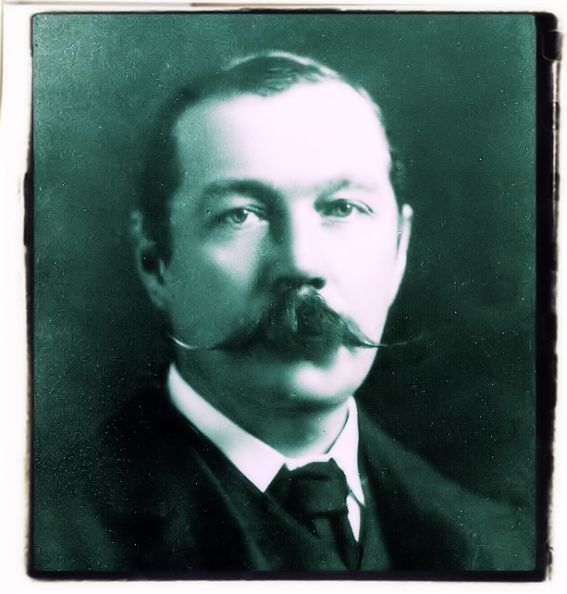
Who do you look like? The Pickwick papers, Charles Dickens
Sometimes people remind us of other people or even animals. Choose a few people and really try to observe them. Look at their body movements and gestures and see if you can associate them with any other ideas. What are the people around you like?
Dickens describes how a group of friends is formed: he describes them one by one but leaves the reader free to interpret the characters’ facial features. This extract is taken from the first chapter of The Pickwick Papers.
Mr Samuel Pickwick was a wealthy gentleman who loved observing human nature. If you saw him in the street, you would find nothing unusual about him: he was old, plump, and bald, and he wore glasses. But inside that plump body beat the generous heart of Mr Pickwick, inside that bald head was the brilliant brain of Mr Pickwick, and from behind those glasses the observant eyes of Mr Pickwick looked out at the world.
Mr Pickwick had never married. He lived in two pleasant rooms, which he rented from a lady called Mrs Bardell, in a house on Goswell Street in London. He had three close friends. Mr Tracy Tupman was a middle-aged gentleman who loved ladies. Mr August Snodgrass was a thin young man with dark eyes and a passion for poetry. Mr Nathaniel Winkle was a tall young man from a very rich family, who liked sports of any kind; he wasn’t good at sports, but he never told anyone that secret. Mr Pickwick formed a club called the Pickwick Club, and his three friends were all members. At the first meeting, on 6th May 1827, the members ate roast lamb and drank red wine. After dinner, Mr Pickwick stood up and addressed the meeting. “I want to thank you all for coming this evening and for choosing Mr Tupman, Mr Snodgrass, Mr Winkle, and myself to represent you”. (Here the members of the Club cheered and banged their glasses on the table.) “Starting next week, we will travel around England, observing the behaviour of people in the places we visit and taking notes.” (Here Mr Pickwick took a notebook from his pocket and raised it in the air; everyone clapped loudly.) “We will return to give a report to the next meeting of the Pickwick Club, six months from now.” (Here the members of the Club filled their glasses and proposed a toast to Mr Pickwick.)
William Thackeray was Dickens’ great rival in the first half of Queen Victoria’s reign. With a similar style but a slightly more detached, acerbic and barbed satirical view of his characters, he also tended to depict a more middle class society than Dickens did. He was born in Calcutta, India, the son of a high official In the Indian Civil Service. When he was five he was sent to England to be educated at the Charterhouse school, which he left in due time to attend Cambridge University. By this time Thackeray had learned how to mask his sensitivity with a sarcastic manner. In 1830 he visited Veimar, and his facility in caricaturing led him to become an art student in Paris, where he married a young penniless girl. Thackeray, unlike Dickens, spent his youth in ease and dissipation; he wasted his inheritance and was compelled to live by his wits both as a journalist and as a caricaturist. After his return to England he supplied the “Punch” and the “Fraser’s Magazine” with sketches, ballads and short stories that made him discover his humouristic genius. In 1846 he published The Snob Papers, vivacious sketches of London life, where the author deals especially with the “snobs” or people having an exaggerated respect for social position and wealth, and who are therefore inclined to despise their social inferiors and be servile to their social superiors.
In 1847 Thackeray published Vanity Fair: a Novel Without a Hero. Departing from the biographical pattern in fashion ever since Defoe’s work, the author interweaves the careers of several contrasted characters who range over the vast area of the upper-middle class in England and abroad. He seems to be mainly concerned with the indefinable conflicts of social change: the aristocracy striving to preserve its prerogatives, the hypocrisy of the new business class, torn between its desire for material advancement and its devotion to Puritan morality. That helps him to draw a perfect satirical picture of nineteenth century British society and create a gallery of lifelike characters in a milieu that seems to be a perfect and complete reconstruction of actuality. Pendennis followed in 1849; it is a mild satire of the career of Arthur Pendennis, a spoilt university student, who is by many readers considered to be a portrait of the author himself. The History of Henry Esmond (1852), is a blend of the domestic novel of manners and the historical romance. Thackeray gives a graphic picture of the Age of Queen Anne and the Jacobite plots in the times of the old Pretender, and into the story of the central character he interweaves the character of many historical personages such as Addison, Swift and Steele. The historical novel is here revived and treated from a new standpoint: the author describes the past realistically, as if he were a contemporary writer, and intentionally imitates the language and style of Queen Anne’s time. The Newcomes (1854), is an accurate portrayal of English middle and upper-class society presented under the form of a family chronicle. The author criticizes the conventions of Victorian society with its custom of parental selection in order to find suitable males for its daughters; also its insistence on praising wealth above other values, and its pretended wordliness. The Virginians (1858) is a sequel to Edmond’s and shows us Edmond’s grandsons in America at the time of the American Revolution.
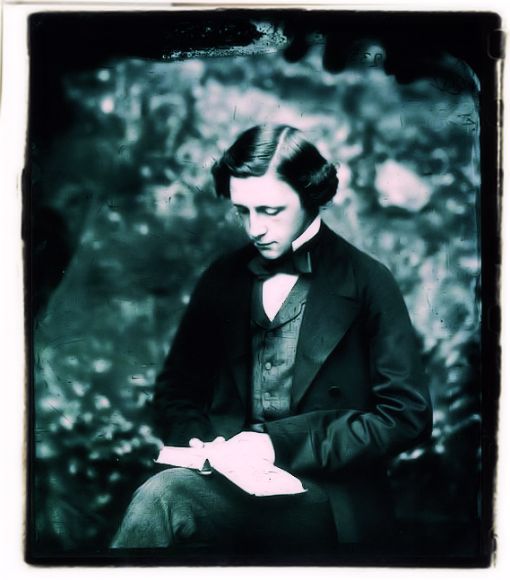
Thakeray was a man of the world, a careful observer who looked upon society with a critical eye. Like Fielding he hated sham, loathed the snobs and scourged what he thought to be the faults of the people of his day; but he did so, not because he wanted to reform manners and society but with the honesty and humour of a great artist. His upper-class characters are finely drawn and move tinder the full control of the artist in tightly constructed and logically developed plots. In technique he is the master in list of his age in fiction. His manner of writing is slow and methodical and his language clear, concise and brilliant.
Anthony Trollope (1815 – 1882). After some unsuccessful novels, written to expound the wises of the wretchedness of Ireland, Trollope produced a whole series of studies in the novel form. These are generally called the “Barsetshire” novels, because they deal with life among the clergy and parishioners of Barsetshire, a fictional cathedral town. The writer was interested in individual behaviour, without concern over theories and his microcosm, isolated from the wider world by geography and by vocation, is a perfect for the analysis of human behaviour in relation to social patterns. Trollope wrote with ease and regularity in a uniform and almost impersonal style giving a realistic picture of provincial life and especially of the ecclesiastical world of a cathedral town.
The Brontë sisters wrote fiction rather different from that common at the time. The Romanticism ridiculed by Thackeray was still present and alive in the works of the Brontë Sisters. Emily and Charlotte Brontë were the daughters of an eccentric Irish evangelical preacher. Their experience was limited to the bleak northern moors and to a few years spent as pupils lid as teachers in shabby boarding schools; but they observed their restricted environment with poetic intensity and interpreted it with concentrated emotion. Anne, Charlotte and Emily Brontë produced notable works of the period, although these were not immediately appreciated by Victorian critics. Charlotte’s Jane Eyre (1847), reflects much of the writer’s personal experience, and Emily’s Wuthering Heights (1847), is an impressionistic romance where the author leads the reader into one of the most wildly dramatic atmosphere of tragic love set on the background of the bleak northern moors. The plot centers upon an overlasting love, however devoid of sexual passion, and critics have condemned it both for the violence of some scenes and for its “Gothic” exaggerations. This novel is a true revelation of the severe but imaginative gloom of the author’s own temeperament, and a very good description of the clash of human souls. Anne’s second novel The Tenant of Wildfell Hall (1848), written in realistic rather than romantic style, is mainly considered to be the first sustained feminist novel. The gloomy atmosphere of their house, their mother’s early death, the continuous struggle against poverty, the strange habits of their father, together with the lack of normal association with people of their age fed their lives with imagination and prolonged their fantasies above the normal age of childish make-believe.
Later in this period George Eliot (Mary Ann Evans), published The Mill on the Floss in 1860, and in 1872 her most famous work Middlemarch. Like the Brontës she published under a masculine pseudonym. In the later decades of the Victorian era Thomas Hardy (1840-1928) was an important novelist. His most notable works include Under the Greenwood Tree (1872), Far from the Madding Crowd (1874), The Mayor of Casterbridge (1886), Tess of the d’Urbervilles (1891), and Jude the Obscure (1895). Renowned for his cynical yet idyllic portrayal of pastoral life in the English countryside, Hardy’s work pushed back against widespread urbanisation that came to symbolise the Victorian age. Hardy denies Providence and sees the world dominated by a blind destructive will guiding man’s destiny: fatalism is everywhere dominant and the optimism of the earlier novelists is replaced by calm resignation. Other significant novelists of this era were Elizabeth Gaskell (1810–1865), Anthony Trollope (1815–1882), George Meredith (1828–1909), and George Gissing (1857–1903).
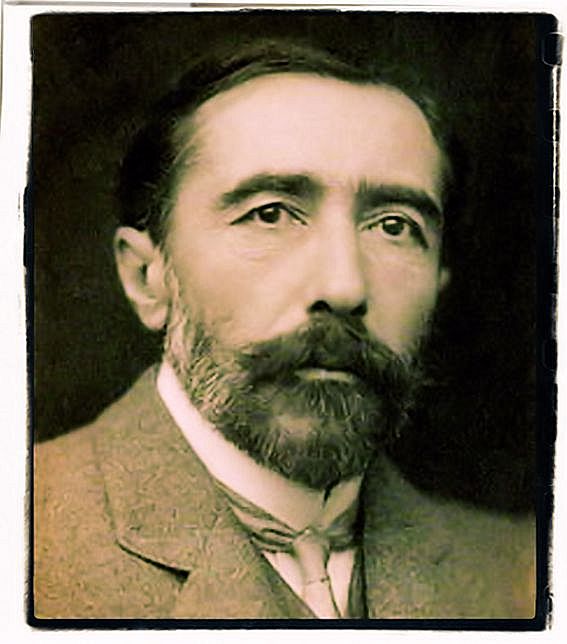
Lewis Carroll (1832–1898) is the pseudonym used by Charles Lutwidge Dodgson to sign his most famous works. He was born in the village of Daresbury, England, on January 27, 1832. The eldest boy in a family of 11 children, Carroll was rather adept at entertaining himself and his siblings. His father, a clergyman, raised them in the rectory. The children lived isolated and during his holidays he took a leading part in family amusements, producing a home-made magazine largely consisting of his own comic verse and inventing games for his brothers and sisters. As a boy, Carroll excelled in mathematics and won many academic prizes. At age 20, he was awarded a studentship (called a scholarship in other colleges) to Christ College. Apart from serving as a lecturer in mathematics, he was an avid photographer and wrote essays, political pamphlets and poetry. “The Hunting of the Snark” (1876) is a narrative nonsense poem that is rivaled only by the best of Edward Lear and displays his wonderful ability in the genre of literary nonsense of the highest style, what’s more “Alice-in-Wonderland situation” has come to mean an absurd or irrational condition because of the dreamlike logic of Alice’s adventures in the book.
Carroll suffered from a bad stammer, but he found himself vocally fluent when speaking with children. The relationships he had with young people in his adult years are of great interest, as they undoubtedly inspired his best-known writings and have been a point of disturbing speculation over the years. Carroll loved to entertain children, and it was Alice, the daughter of Henry George Liddell, who can be credited with his pinnacle inspiration. Alice Liddell remembers spending many hours with Carroll, sitting on his couch while he told fantastic tales of dream worlds. During an afternoon picnic with Alice and her two sisters, Carroll told the first iteration of what would later become Alice’s Adventures in Wonderland. When Alice arrived home, she exclaimed that he must write the story down for her. He fulfilled the small girl’s request, and through a series of coincidences, the story fell into the hands of the novelist Henry Kingsley, who urged Carroll to publish it. The book Alice’s Adventures in Wonderland was released in 1865. It is a children’s story. Alice dreams she follows the White rabbit down a hole and meets fantastic characters, such as the Cheshire cat, the Mad Hatter, and the King and Queen of Hearts. The book gained steady popularity, and as a result, Carroll wrote the sequel, Through the Looking-Glass and What Alice Found There (1871). By the time of his death, Alice had become the most popular children’s book in England, and by 1932, it was one of the most popular in the world. Besides writing, Carroll created a number of fine photographs. His notable portraits include those of the actress Ellen Terry and the poet Alfred Tennyson. He also photographed children in every possible costume and situation, eventually making nude studies of them. Despite conjecture, little real evidence of child abuse can be brought against him. Shortly before his 66th birthday, Carroll caught a severe case of influenza, which led to pneumonia. He died on January 14, 1898, leaving an enigma behind him.
In the last decades of the nineteenth century we witness to a turning-point in English Literature as well as in English life. Up to the 1870ies Great Britain had been unequalled in prosperity and Victorian society had consequently shown a certain equilibrium and self-confidence. Atter 1875, however, under repeated and various shocks, that apparent equilibrium and self-confidence seemed to be weakened and replaced by a feeling of instability and a need for spiritual renovation. The decline in the economics activity, due mainly to the competition of the younger nations, the revival of Socialism which began to be seen as an active force, the anguish and the conquest of the Boer War stimulated that uneasiness rather, than diminishing it. The technical developments and the consequent improvement in communications helped the English temperament to become more open to foreign influences and Russian, Scandinavian and Continental literatures powerfully affected British writers. All these changes found an echo in life and literature and intensified the break with tradition while promoting a sort of literary anarchy. Outside the field of drama, which remained attached to the Victorian principles, literary expression became extremely free and manifested itself in the various reactions to the disintegration of Victorian values: a sharp satire against Victorian conventions and taboos, a certain optimism in man’s natural ability to rise to individual happiness, an intensified realism tinged with gloomy pessimism, a fanciful reaction often combined with a taste for exoticism, and an escape into the aesthetic creed.
Samuel Butler (1835-1902) graduated from Cambridge and spent some years in New Zealand. On his return to England he gave himself over to journalism, painting and music. He lived and wrote in comparatively obscurity, but since his death he has been acclaimed as one of the seminal minds of his age. His renown rests on two novels and on a piece of non-conformist criticism The Authoress of Odyssey where to annoy University Professors the author advances the fantastic theory wherby the Odyssey was written by woman. Butler flays the Victorian ideas of family life, of morality, religion and social conventions with the same gusto as the writers of the following generation. His “Erewhon” (“nowhere” backward) is full of attacks on English institutions and English stupidity. Christian dchurches are ridiculed as “The Musical Banks”, where one can draw money which can be used only in the next world, and the “Book of the Machines” warns that machines, if allowed to gain ascendancy over man, may develop to a point where they can destroy him and take over his function. His most popular novel in the present century is however The Way of All Flesh, which kept him busy from 1872 to 1885. It is the story of Ernest Pontifex, his upbringing by tyrannical parents who think themselves models of rectitude, his entry into the ministry only to find out that the brand of formal Christianity existing in the Church of England is a sham and his final contentment lies in writing novels. Ernest learns to take little seriously, except belief in evolution, which, working both in the natural and in the intellectual world, will gradually develop a common sense and drive out the old superstitions. Butler attacks the Church, the family, the institution of marriage and the false Gods of Victorian education using wit, irony and all sort of paradoxical argumentations. His novel had a considerable influence on later writers and on G. B. Shaw in particular who in Major Barbara pronounced Butler “the greatest English writer of the latter half of the XIX Century” and laughed at the English for not realizing how much Shaw himself owed to Butler’s entire on English life.
A return to optimism appears in the verse and prose of Robert Louis Stevenson, a Scot who had to fight for life against tubercolosis, but lived and travelled to various countries to find better climates for his lungs. He was always a great rebel and adventurer and wrote for a living during the last twenty years of his life. His novels of adventures and stories of wrecks, pirates, prisoners of wars etc. still fascinate young people and represent a particular form of escape from Victorian reality into a charming make-believe. Stevenson combines in his work his taste for Romanticism and exoticism with a realistic method developing a style of his own, whose vigour and clarity enabled him to excel in the narrative. His best novels of adventures are Treasure Island (1883) which still delights boys, Kidnapped (1886) relating the efforts of young David Bilafour to recover his rightful Inheritance from his Uncle Ebenezer, David Balaf our written in 1893 as a sequel of the preceding romance, The Master of Ballantrae (1889) and The Strange Case of Doctor Jekyll and Mr. Hyde (1886), dealing With the duality of good and evil within the same man.
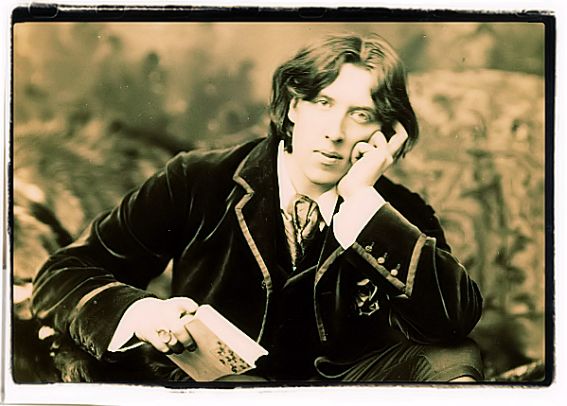
Sir Arthur Conan Doyle (1859-1930) With Stevenson however there was another writer worth mentioning who popularized widely differing versions of the romance simply written. and to be persued for the thrill of escape into the realm of danger: Sir Arthur Conan Doyle (The Adventures of Sherlock Holmes and The Memoirs of Sherlock Holmes). Following Poe’s example, Conan Doyle chose the short story as his literary means and wrote long series of tales, each relating to a separate adventure of the same central figures. But to E.A. Poe’s plots based upon rational enquiry Doyle added sensational adventures and exotic sceneries thus combining the features of the detective fiction and the thriller, and satisfying the tastes of a far greater public: both intellectual and popular. Also the figure of his detective Sherlock Holmes is traced in part upon that of Dupin; however the former’s excessive perfection and his infallibility make us feel that, though he has inherited Dupin’s eccentricity he lacks both Dupin’s historical and human significance: the spectator of life has become a kind of superman.
Joseph Conrad (1857-1924) Conrad was born in the Polish Ukraine, and his childhood knew many a hardship, due to the political persecutions his Polish parents underwent. An orphan at an early age, he had a good upbringing but a somewhat irregular education, and soon left his foreign occupied country, Poland, to follow the call of the sea. After a few ocean voyages to the West Indies and the Caribbee in French sailing ships, Conrad, then barely twenty, joined the British Merchant Service, shipping “before the mast”. He didn’t know a word of English, but he mastered the language soon enough and obtained in due course his certificates as mate and master mariner, as well as his British naturalisation (1886). He had already sailed to the Orient and the Southern Ocean; now his voyages were again for Australia and in the Malay Archipelago, and brought him even a command, of the bark Otago, and of a steamboat up the Congo, too. But shipping, at the time, was knowing a major transformation; it was the last of the great era of sail, and ships were hard to find for a sailor.
Conrad by the time had embarked, almost unaware, in a literary career, writing Almayer’s Folly (1895), which was received with much appreciation. He was forty, then, but he was to put out an astounding amount of work, producing a book almost every year. The Nigger of the Narcissus (1897), Lord Jim (1900), Youth (1902), Typhoon (1903), The Shadow-Line (1912), all stemming from his experiences in far away seas, are among his most widely acclaimed works. The exotic and adventurous setting made for some similarity with his predecessor, Stevenson; but Conrad was mainly concerned with the depths, and ambiguities of human nature and fate, and his greatest achievements are to be found, perhaps, in Heart of Darkness (1899) and Nostromo (1904). His characters are not described but presented to the reader in their complexity through various angles and by means of confessions, recollections and fragmentary images given by witnesses. Often they will be outcasts or solitary individuals, and even when they stand among beautifully painted tropical sceneries, this background tends to become the symbol of an inner pessimistic reality, ridden by perplexities and contradictions as well as by a guilty complex. Conrad, Pole born, was attracted by the possibilities of the English language for a narrative and descriptive purpose, and he used it as his literary medium in an oustanding way. His prose, enriched with the characteristics of foreign qualities, in form and feeling, gives him an unique place in English literature and in the “great tradition” of the English novel.
In departing from the rigid conventionality and the scientific materialism of the Victorian age some writers of the 1890ies naturally bent in the opposite direction, cultivating what had hitherto been considered “immoral”. They lulled in queer attitudes and overemotionalized expressions, exasperating the Pre-Raphaelite dogma “art for art’s sake”, and finding in Pater’s advocation of hedonism as a way of life the expression of their new creed.
Oscar Wilde (1856-1900) is the most outstanding figure of this “fin de siecle” generation. He was born in Dublin from aristocratic Celtic parents, and from his mother, who was very disappointed at not having a girl, he received the best female upbringing. In Oxford he distinguished himself for his talent, and later in London attracted attention by his eccentricity and his insulting wit. His collections of tales, among which The Happy Prince (1888) and A House of Pomegranates (1892) are the most famous, display a certain fantasy and artificiality. The writer expressed himself unreservedly in The Picture of Dorian Gray (1891), where his aestheticism is found in all its aspects: from the search for rare sensations to the ban of every feeling or belief which might in some ways hinder the faculty of enjoyment, to the superiority of the artist over the rules of society and morality. Wilde’s real popularity, however, came from a series of comedies he wrote, starting with Lady Windermere’s Fan (1892) and reaching its climax with The Importance of Being Earnest (1895).
These plays revitalized the English stage which had lain dormant for over a century and showed Wilde’s gifts for dramatization, for sophisticated dialogues and for gay absurdity; but sound rather empty to today’s audiences. Married and with two sons, Wilde fell the victim of homosexuality and unfortunately mixed his aesthetic theories with real life stubbornly carrying his fight into the English courts. During the trials, which became the scandal of the age, he rejected his friends’ advice to escape to France and answered disrespectfully to the prosecution’s charges of homosexuality. He was condemned to two years of hard labour in Reading Gaol. His wife left him, his plays were taken off the stage and his properties sold at auction; but distress matured his utterance and inspired two of his best works: the explanatory letter De Profundis (1896), written during the years of imprisonment, and The Ballad of Reading Gaol (1898) written in France, where he had retired to spend the last years of his life in squalor and poverty. He died of meningoencefalitis from an ear infection in a room of Hotel d’Alsace, 13 rue des beaux arts, Paris. His last words… Looking at the dreadful wallpaper in his cheap lodgings he said: “Well, one of us had to go!”
From “The Picture of Dorian Gray’s preface”:
• The artist is the creator of beautiful things…
• The critic is he who can translate this…
• There is no such thing as a moral or immoral book. Books are well written or badly written. That’s all.
• The artist can express everything…
• Vice and virtue are to the artist material for an art…
On the Victorian period you can also read the following articles:
Great Expectations masterpiece
Benjamin Disraeli great quotes
The Victorian Age in Literature by G. K. Chesterton

